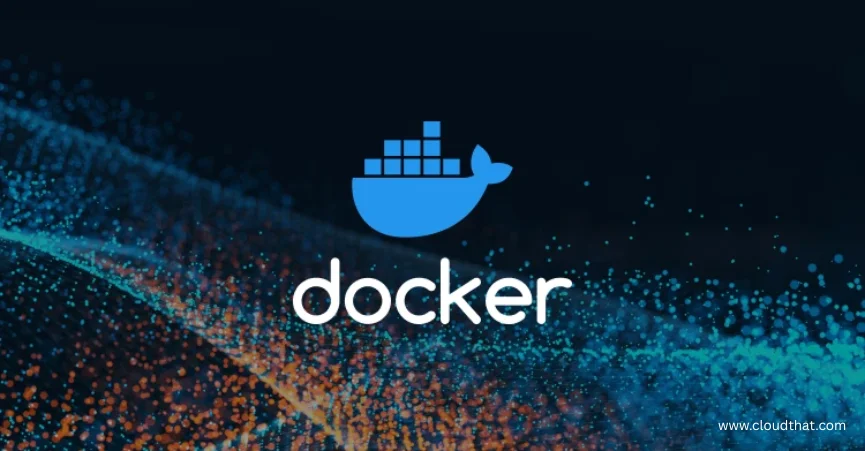|
Voiced by Amazon Polly |
Overview
Docker Swarm is Docker’s native container orchestration tool that enables organizations to deploy, manage, and scale containerized applications seamlessly. Unlike Kubernetes, which can be complex for smaller deployments, Docker Swarm offers a lightweight and easy-to-use orchestration solution built directly into the Docker Engine. It allows multiple Docker hosts to be combined into a single cluster, making it appear as a single virtual host for deploying services.
Docker Swarm is ideal for teams looking to manage microservices without adopting more complex orchestration frameworks. With Swarm, you can define services, scale containers, maintain high availability, and implement rolling updates, all while leveraging Docker’s existing CLI and APIs.
Pioneers in Cloud Consulting & Migration Services
- Reduced infrastructural costs
- Accelerated application deployment
Key Features
- Simple Setup: Swarm is built into Docker, requiring minimal configuration.
- Service Scaling: Easily scale services up or down with a single command.
- High Availability: Ensures that services continue running even if some nodes fail.
- Load Balancing: Automatically distributes requests across all available containers.
- Rolling Updates: Deploy new versions of a service without downtime.
- Overlay Networking: Allows secure communication between containers across nodes.
- Integration with Docker CLI: No need to learn new tooling; use familiar Docker commands.
Steps to Implement Docker Swarm
Step 1: Install Docker
Ensure Docker Engine is installed on all servers that will participate in the Swarm cluster.
|
1 2 |
sudo apt-get update sudo apt-get install docker-ce docker-ce-cli containerd.io |
Step 2: Initialize Swarm Mode
Choose one node to be the manager and initialize Swarm:
|
1 |
docker swarm init --advertise-addr <MANAGER-IP> |
Step 3: Add Worker Nodes
Obtain the join token from the manager:
|
1 |
docker swarm join-token worker |
Run the join command on worker nodes to add them to the Swarm.
Step 4: Deploy a Service
Deploy a sample web service:
|
1 |
docker service create --name web --replicas 3 -p 80:80 nginx |
Step 5: Manage Services
- Check running services: docker service ls
- Scale a service: docker service scale web=5
- Update a service: docker service update –image nginx:latest web
Step 6: Configure Overlay Networking
Create a network for multi-host communication:
|
1 2 |
docker network create -d overlay my_overlay docker service create --name my_service --network my_overlay my_image |
Handle Failures & Monitoring
High Availability
- Swarm managers operate in a Raft consensus mode; if one manager fails, the others continue to run.
- Worker nodes automatically restart failed containers.
Monitoring
- Use Docker stats for real-time resource usage: docker stats.
- Integrate with Prometheus and Grafana for metrics visualization.
- Configure the ELK stack for logging across all nodes.
Recovery
- Backup manager node state regularly.
- Use rolling updates to avoid downtime during deployments.
Use Cases
- Microservices architecture for startups and SMEs.
- Rapidly deploy and scale web applications.
- Lightweight orchestration for development and testing environments.
- CI/CD pipelines for containerized applications.
Conclusion
While Kubernetes dominates enterprise orchestration, Swarm’s minimal learning curve and seamless integration with Docker make it a solid choice for small to medium-sized deployments and development environments.
Drop a query if you have any questions regarding Docker Swarm and we will get back to you quickly.
Empowering organizations to become ‘data driven’ enterprises with our Cloud experts.
- Reduced infrastructure costs
- Timely data-driven decisions
About CloudThat
CloudThat is an award-winning company and the first in India to offer cloud training and consulting services worldwide. As a Microsoft Solutions Partner, AWS Advanced Tier Training Partner, and Google Cloud Platform Partner, CloudThat has empowered over 850,000 professionals through 600+ cloud certifications winning global recognition for its training excellence including 20 MCT Trainers in Microsoft’s Global Top 100 and an impressive 12 awards in the last 8 years. CloudThat specializes in Cloud Migration, Data Platforms, DevOps, IoT, and cutting-edge technologies like Gen AI & AI/ML. It has delivered over 500 consulting projects for 250+ organizations in 30+ countries as it continues to empower professionals and enterprises to thrive in the digital-first world.
FAQs
1. How does Docker Swarm differ from Kubernetes?
ANS: – Swarm is simpler and lighter, integrated with Docker CLI. Kubernetes offers advanced features and is suitable for complex, large-scale deployments.
2. Can Swarm run on multiple cloud providers?
ANS: – Yes, Swarm can run across any servers with Docker installed, including cloud VMs from AWS, Azure, or GCP.
3. How is high availability handled?
ANS: – Swarm utilizes manager nodes in Raft consensus and automatically reschedules containers in the event of a node failure.

WRITTEN BY Riyazuddin
Riyazuddin works as an Associate Architect – Infra, brings over 15+ years of experience in DevOps, System Design, Networking, and Programming. Skilled in AWS, Azure, Terraform, Docker, Kubernetes, Jenkins, Openshift, Ansible, and Python, he designs scalable, secure systems and drives automation through cloud-native architectures and IaC. Known for his analytical mindset and leadership, he mentors teams and delivers high-impact, enterprise-ready solutions aligned with business goals.


 Login
Login


 October 6, 2025
October 6, 2025 PREV
PREV










Comments